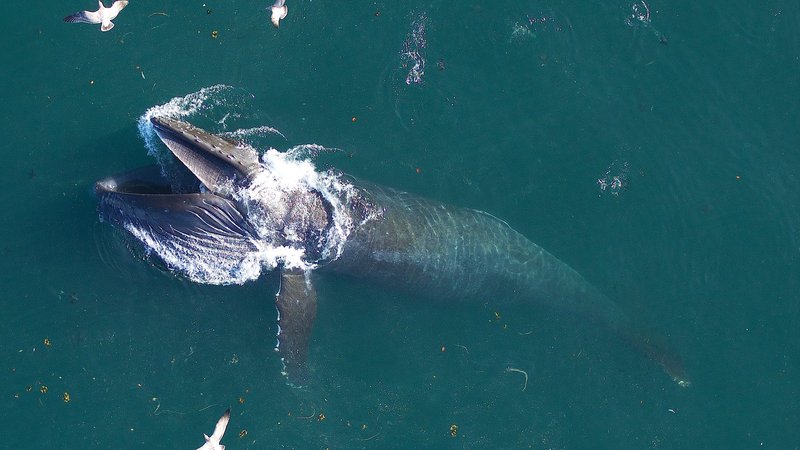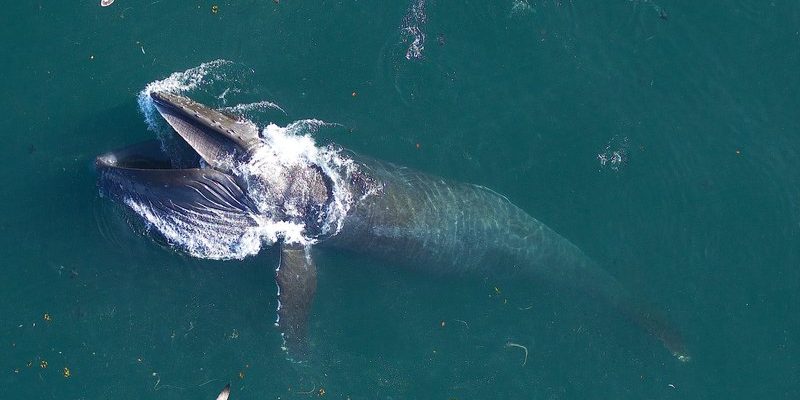
Imagine you’re at the beach, enjoying the sun and the sound of waves crashing against the shore. Suddenly, you spot a humpback whale breeching out of the water, its massive body creating a splash. It’s a beautiful moment that connects us to nature. But behind that beauty, there are serious challenges these whales face as their environment shifts. As ocean temperatures rise and food sources dwindle, the future of humpback whales hangs in the balance. So, what’s going on beneath the surface? Let me explain.
Understanding Humpback Whales
Humpback whales, known for their long pectoral fins and complex songs, can weigh up to 40 tons and grow as long as 60 feet. They are migratory mammals, traveling thousands of miles every year between their feeding grounds in cold waters and breeding spots in warmer, tropical regions. This annual journey is not just a beautiful sight; it’s essential for their survival.
But what helps them thrive? Humpbacks primarily feed on small fish and krill, using a technique called bubble-net feeding to catch their prey. They create a ring of bubbles to trap fish and then lunge through the center with their mouths wide open. This stunning display of agility and teamwork is a clear demonstration of their intelligence. Unfortunately, as climate change alters ocean temperatures and currents, their feeding strategies and, ultimately, their survival are put at risk.
Whales and Their Changing Habitat
A major impact of climate change is the alteration of marine habitats. As ocean temperatures rise, the ecosystems that support humpback whales are changing rapidly. Warmer waters can shift the distribution of fish and other prey species, making it more difficult for humpbacks to find food when they need it most.
For example, certain fish species may move to colder waters, leaving humpbacks with less access to their traditional feeding grounds. Without the right food supply, it’s like having a feast set up and then finding out your favorite dishes have vanished. Whales might have to travel further and expend more energy to find food, which can lead to stress and malnutrition.
Additionally, some areas that were once rich feeding grounds may become less productive due to changes in ocean currents and nutrient flows. This means that the migratory patterns of humpback whales are also at risk of becoming disrupted, which can impact their breeding and rearing of calves.
Ocean Acidification and Its Effects
Another consequence of climate change is ocean acidification, which occurs when excess carbon dioxide in the atmosphere dissolves into the ocean. This process can have dire effects on marine life, particularly on the tiny organisms at the base of the food chain, like krill.
Humpback whales depend on krill for food, especially during their feeding season in colder waters. As ocean acidity increases, it can affect krill populations, making them less abundant or less nutritious. Imagine wanting to eat your favorite dish but finding out that the chef has changed the recipe, making it less enjoyable or even unhealthy. That’s a bit like what humpbacks face with declining krill populations due to acidification.
Moreover, ocean acidification can impact the overall health of marine ecosystems. Coral reefs, which serve as critical habitats for many fish species, are also affected, leading to a ripple effect throughout the ecosystem. Humpback whales depend on healthy oceans, and as these ecosystems become less stable, so too does their future.
Climate Change and Humpback Migration
Humpback whales are famous for their long migrations from feeding grounds to breeding grounds. However, climate change could alter these routes, leading to unforeseen challenges. Changes in ocean temperatures and currents can affect when and where whales choose to migrate.
For instance, if warmer waters push fish further north or south, humpback whales may need to adapt their migration schedule. It’s akin to having to change your daily route to work because of ongoing road construction. Not only is it inconvenient, but it can also take more time, energy, and effort. These potential route changes can lead to increased competition for food with other marine animals and added stress on populations.
Also, altered migration patterns can affect the timing of breeding. If whales arrive too early or too late to their breeding grounds, it could impact their chances of successful reproduction. Just like flowers that bloom too soon or too late, the timing matters for these creatures to thrive.
Impact of Noise Pollution
With climate change comes another often-overlooked issue: noise pollution. As ocean temperatures rise, marine shipping routes may shift, and more vessels could be operating in areas where whales are present. Increased noise levels can disrupt the communication of humpback whales, who rely heavily on vocalizations to find mates, navigate, and locate food.
Imagine trying to have a conversation in a loud, bustling restaurant. It’s tough, right? That’s what whales experience when there’s too much noise in their environment. If they can’t hear each other, it can lead to difficulties in mating and finding food. This stress can have long-term effects on the health of whale populations.
Additionally, noise pollution from shipping traffic can lead to physical harm, as whales may collide with vessels they didn’t hear approaching. These accidents can be fatal and significantly impact humpback populations, which are already struggling under the pressures of climate change.
Conservation Efforts and Hope for the Future
Despite the challenges humpback whales face due to climate change, there is hope. Various organizations and governments are working on conservation efforts to protect these magnificent creatures and their habitats. Measures include establishing marine protected areas, regulating shipping traffic, and advocating for lower carbon emissions.
You might wonder, “How can I help?” Simple actions like reducing plastic use, supporting sustainable seafood, and spreading awareness about the challenges humpbacks face can make a difference. Every little bit counts in the fight against climate change and its impact on marine life.
In addition to individual actions, science and technology are playing a big role. Researchers are using data to understand how climate change affects ocean ecosystems better. By keeping track of whale populations, feeding habits, and migration patterns, we can create better strategies for conservation.
As we’ve seen, the effects of climate change on the humpback whale are significant and multifaceted. From shifting feeding grounds to challenges with migration and communication, these stunning animals are feeling the impact. However, with ongoing research and conservation efforts, there is still hope for the future.
By improving our understanding of the challenges humpback whales face, we can better advocate for their protection. The next time you hear a story about these whales or witness their beauty firsthand, remember the story behind their struggles. Together, we can help ensure that humpback whales continue to grace our oceans for generations to come.

